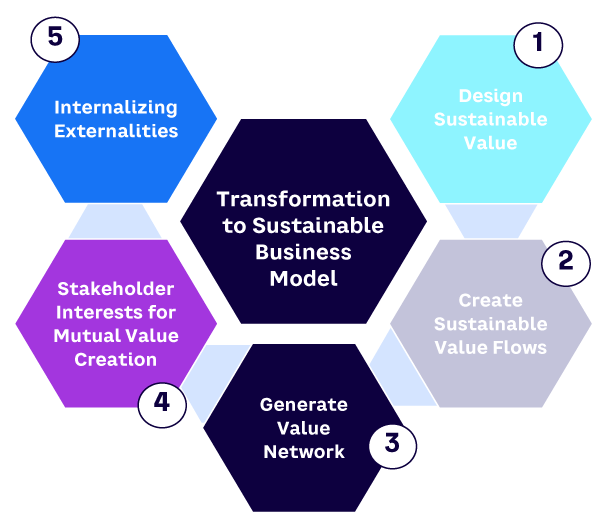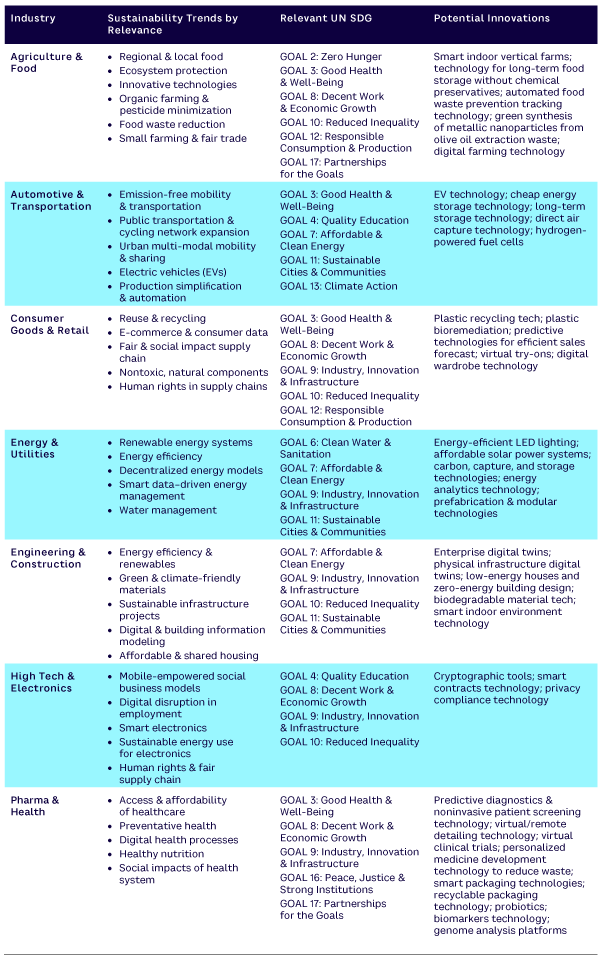A business model is a conceptual tool used to represent how a firm does business; it can be used for analysis, comparison and performance assessment, management, communication, and innovation. Business models are concerned with how a firm defines its competitive strategy through the design of the product or service it offers to its market, how much it charges for that product or service and what it costs to produce, how its value proposition differentiates itself from that of other firms, and how the firm integrates its own value chain with those of other firms in a value network.
The Transformation
There are several models, frameworks, or guidelines that elaborate upon how to innovate a sustainable business model or how to shift a conventional business model to a sustainable business model. Literature surveys point to salient paradigms for transformation toward a sustainable business model and suggest that designing a sustainable business model means designing a value proposition that identifies formerly underserved stakeholders (including society and the environment) in the value proposition. A model elucidates how a business makes money through value proposition, value creation, and value delivery. To ensure a business is sustainable, its business model must be sustainable and it must create value without placing unintended stress on society, the environment, and economic systems.
Recent reviews of the business model definition have interpreted sustainable business models as a modification of the conventional business model concept, with the addition of certain characteristics and goals emphasizing sustainability and the circular economy. Sustainable business models must incorporate concepts, principles, or goals that aim for sustainability, or integrate sustainability into their value proposition, value creation, delivery activities, and/or value capture mechanisms. The main aim of these revisions is to lead firms to be more sustainable economic systems, to integrate sustainability topics into organizations, and to develop sustainability ambitions.
Businesses in a range of industries, with different characteristics, can achieve their sustainability ambitions by revising their business models to include sustainability principles. Many researchers have incorporated models, frameworks, and guidelines to provide possible solutions for sustainable development in business. As an example, Figure 1 illustrates five paradigms outlined by Evans et al. for transformation toward a sustainable business model:
-
Design sustainable value that incorporates economic, social, and environmental benefits conceptualized as value forms.
-
Create a system of sustainable value flows among multiple stakeholders, including the natural environment and society as primary stakeholders.
-
Generate a value network with a new purpose, design, and governance.
-
Consider the stakeholder interests and responsibilities for mutual value creation.
-
Internalize externalities through the product service system, enabling innovation toward sustainable business models.

A survey of the current literature also indicates that most approaches to a sustainable business model that exist now see the solution in the nature of the value businesses are offering to their users, despite the logic in offering a value proposition that meets sustainability goals. Innovative approaches that encourage businesses to meet sustainability requirements by reconsidering value creation, value delivery, and even value capture processes aren’t as visible, despite providing valuable solutions.
Organizations that aspire to evolve into or freshly design sustainable business models must look to overall sustainability goals, like the United Nation’s Sustainable Development Goals (SDGs), to understand the imperatives of sustainability drivers for their respective industries and sphere of operation. Assessing the opportunities and implications will help them leverage technology as they establish and operate sustainable businesses with sustainable economic growth, ensuring a rate of growth that can be maintained without creating other significant economic problems, especially for future generations.
Table 1 integrates the SDGs with sustainability drivers for business transformation and summarizes the imperatives for representative industries and possible technology innovations for exploration.

[For more from the author on this topic, see: “Balancing Growth & Sustainability: Technology-Led Business Model Transformations.”]



